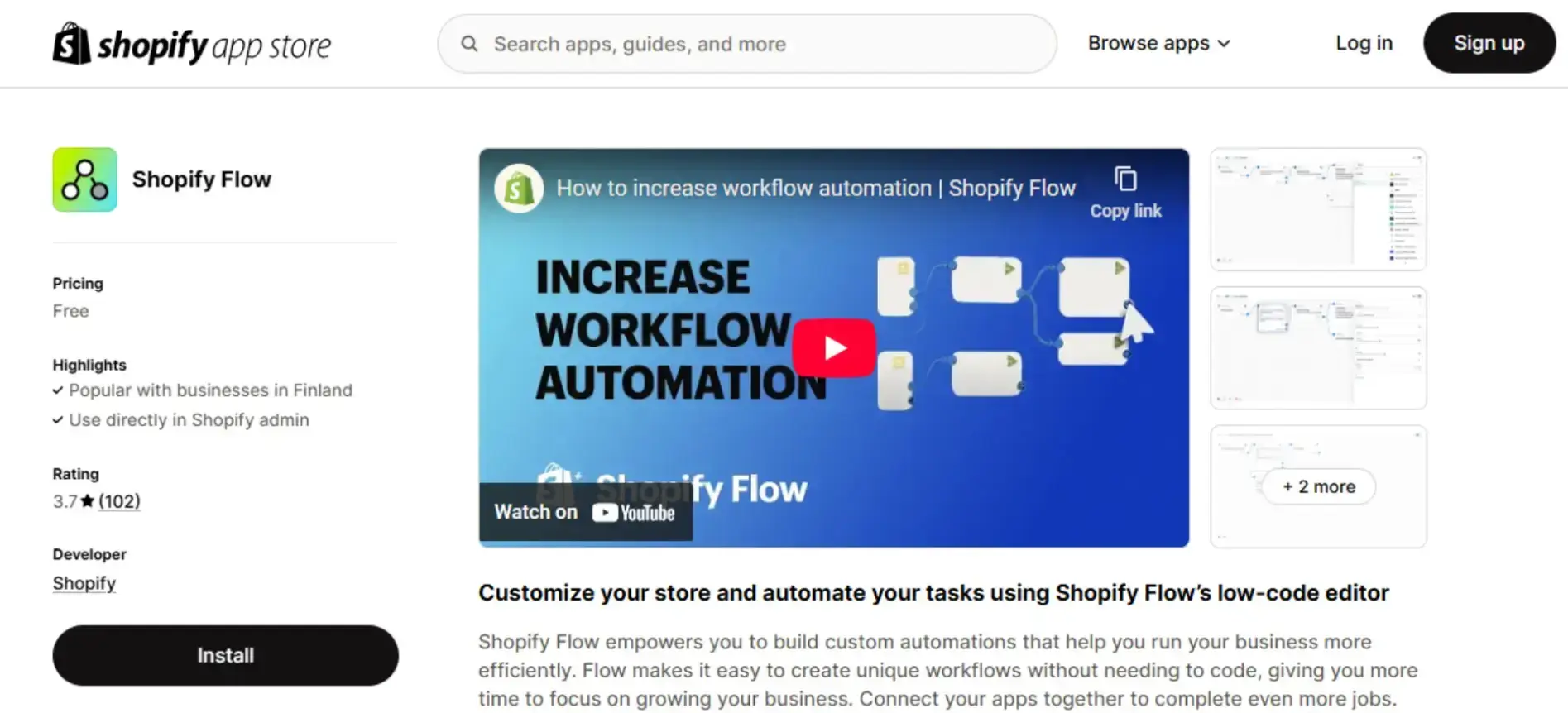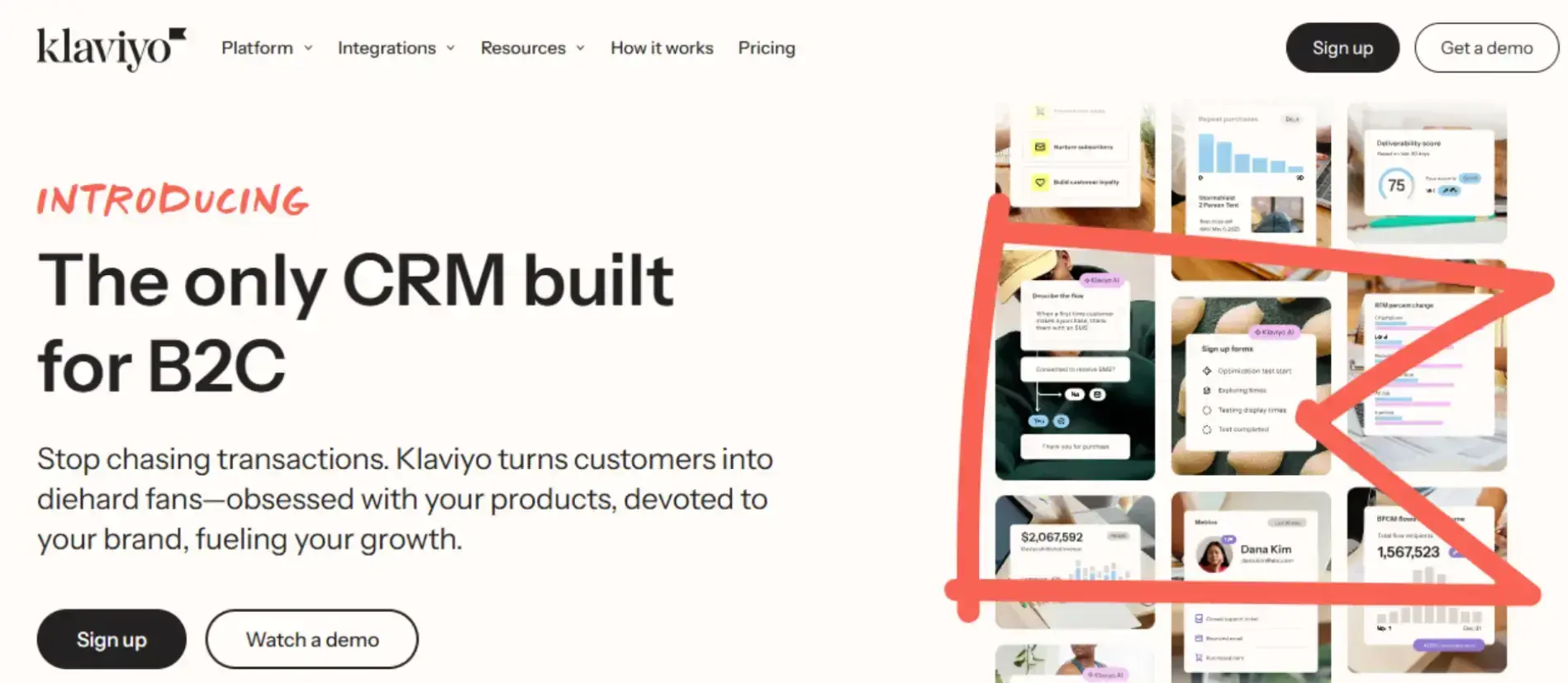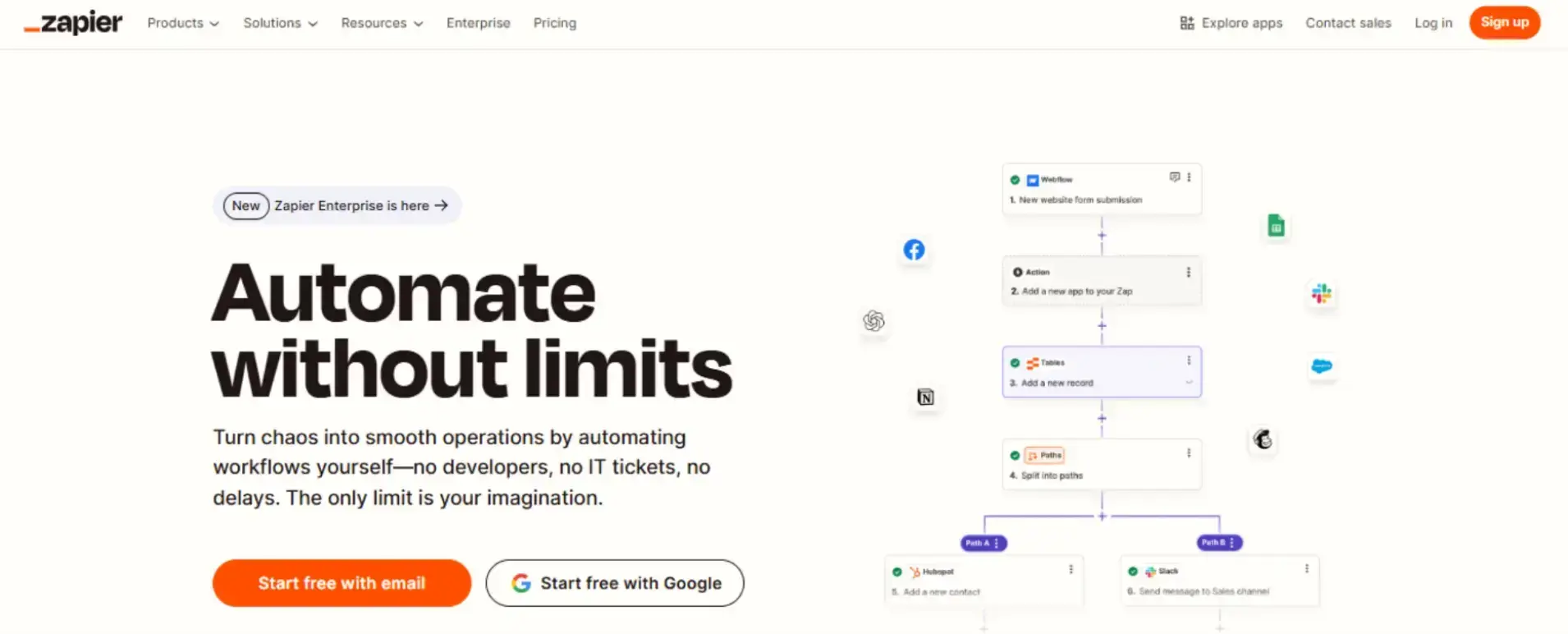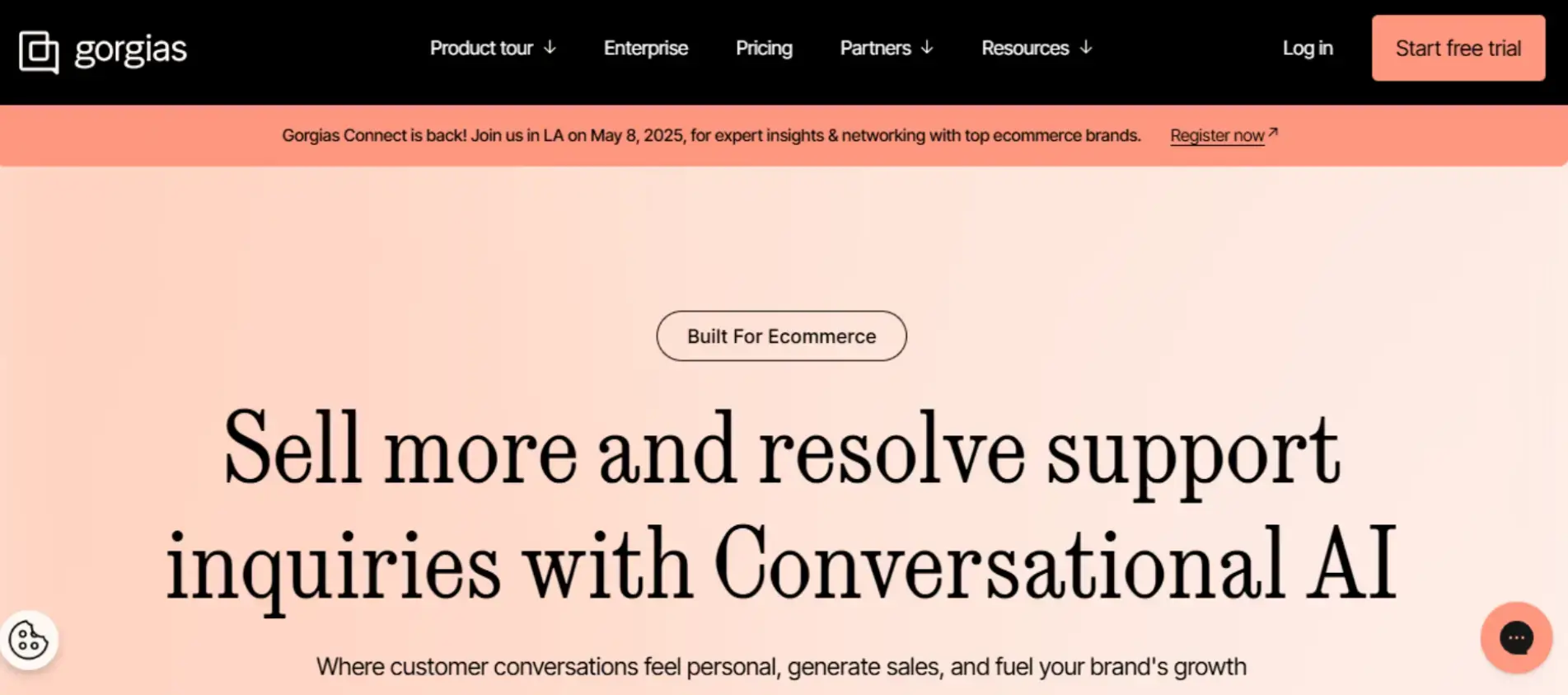You can’t do everything yourself. Answering every message, managing stock, and sending order updates add up fast. But automation helps you take care of the boring stuff so you can focus on what actually moves the needle.
Brands using marketing automation see 14.5% more sales and get things done faster without hiring more people. Let’s look at how automation is changing the way brands grow online.
Article Shortcuts:
- How Automation Drives Operational Efficiency and Scalability
- Tools That Power E-commerce Automation
- FAQ: Automating Your E-commerce Business
The Key Drivers Behind E-commerce Automation Adaptation
Here are the reasons why more and more businesses are relying on automation.
-
Too Much to Do
Every day comes with a long list — confirming orders, checking inventory, sending out tracking info, updating product pages. Doing all this manually might work at the start, but as your store grows, it becomes nearly impossible to keep up.
Automation helps you handle repetitive tasks without burning out. It takes care of the back-and-forth while you stay focused on the bigger picture — like product ideas, marketing, or customer experience.
“E-commerce success often breaks down when store owners spend too much time managing tasks they could automate. The same principle applies to outreach — once you streamline follow-ups and tracking, results come faster and more consistently,” says Hamza G., an Email outreach expert at Outreaching.io.
-
Customers Want Everything Fast
We live in a world of instant gratification. Customers want their questions answered right away, updates sent instantly, and deliveries on time — if not sooner.
If you’re slow, they leave.
Automation helps you respond quickly, even outside of business hours. Auto-replies, order confirmations, delivery updates — it all happens without you lifting a finger. That kind of speed builds trust and keeps customers happy.
-
Marketing Keeps Getting Busier
There’s email, SMS, Facebook, Instagram, TikTok, Google Ads – it never ends. Trying to do everything manually is exhausting.
Automation tools let you schedule campaigns, personalize messages based on what people buy or browse, and follow up with them at the right time. You set it once, and it keeps working for you.
-
Small Teams Need Big Support
Not everyone has a big team or a huge budget. A lot of successful brands are run by just a few people. Automation levels the playing field.
Whether it's automating your customer service with chatbots or syncing your orders with your suppliers, AI tools help you get more done with less,” says Steve Morris, Founder & CEO of NEWMEDIA.
-
The Competition Is Already Using It
Unfortunately, everyone is using AI. Big and small brands are using it to move faster, serve better, and scale quicker.
For example, Glossier, a popular skincare and beauty brand, uses automation to handle email flows based on customer behavior — like welcoming new shoppers, sending reminders for abandoned carts, and even recommending products based on past purchases.

Source: Lifesight
These automated messages bring in sales around the clock without needing someone to hit “send” every time.
Per Markus Åkerlund, CEO of MEONUTRITION says, “If you’re not automating at least some parts of your store, you’re likely falling behind. It doesn’t mean replacing the human touch — it means freeing up your time to do the things that really matter.”
How Automation Drives Operational Efficiency and Scalability
Source: ImageAPI
Let’s talk about how automation is helping brands scale.
-
Smoother Daily Operations Without the Chaos
Running an online store comes with a ton of moving parts — orders, payments, shipping, returns, stock levels, and customer questions.
When you’re just starting out, it’s easy to handle all of that manually. But once the orders start coming in faster, things can get messy real quick.
Automation helps clean up that mess.
For example, instead of checking stock levels every day, you can set up an automated system that tracks inventory and updates your store in real-time.
If an item sells out, it hides the product or shows it as “out of stock” automatically. When new stock arrives, it goes live again — no manual clicks needed.
Same goes for order processing. Once a customer places an order, automation can trigger a series of actions — sending a confirmation email, updating your shipping team, and creating a tracking link — all without you touching a thing. That’s hours saved each week.
And the result? Fewer mistakes, faster service, and more time to focus on what actually grows your business.
Andy Slack, Founder of Health Nutrition, explains, “Scaling doesn’t mean working 16-hour days. It means setting up smarter systems that do the heavy lifting for you. That’s exactly what automation does — it keeps the engine running, even while you sleep.”
-
Better Customer Experience Without More Work
Customers want to feel seen. They want fast replies, clear updates, and offers that actually match what they like. But doing that one-on-one takes time you probably don’t have. Here, automation becomes a game-changer.
Let’s say someone adds something to their cart but doesn’t check out. Instead of hoping they come back, you can set up an automatic email that reminds them gently — or even offers a small discount. It feels personal, but you don't have to lift a finger.
Or imagine a new customer placing their first order. You can automatically send a thank-you email, followed by a welcome series that introduces your brand, top products, or even a quick how-to if you're selling something like skincare or supplements.
It’s a small gesture that builds trust, and the best part? It runs by itself.
Automation also helps with support. Chatbots or auto-replies can answer common questions right away — like shipping times, return policies, or product details. That way, customers get the help they need instantly, even if you’re not online.
All of this adds up to a smoother, more personal shopping experience. And the better the experience, the more likely people are to come back, buy again, and tell their friends.
You don’t need a huge team to treat people well — you just need the right tools running in the background.
-
Marketing That Keeps Working While You Focus Elsewhere
Marketing used to mean sitting down and writing emails, posting on social media every day, and trying to follow up with leads before they went cold. It still takes effort, but with automation, you can set things up once, and they keep working in the background.
Let’s say you’re running a promotion. Instead of manually sending emails every day, you can schedule the entire campaign ahead of time.
Emails go out on the right days, with the right message, to the right people. You’re free to focus on handling orders, managing your team, or just taking a break.
According to Richard McKay, CEO & Managing Director of Sprung Gym Flooring, “Automation isn’t about replacing the personal touch — it’s about delivering it consistently. When emails are timely and relevant, they feel less like marketing and more like service.”
You can also create flows that respond to what people actually do. If someone buys a product, you can automatically recommend similar items a few days later. If they haven’t shopped in a while, you can remind them with a friendly email and maybe offer a discount.
Social media ads can be automated, too. Facebook and Instagram let you run retargeting ads that follow people who’ve visited your site or added items to their cart. These ads are smart — they show the exact product the person was looking at, which makes it more likely they’ll come back and buy.
All this means more reach, more sales, and more consistency — without burning yourself out. In an interview, Raviraj Hegde, SVP of Growth at Donorbox, said, “Automation doesn’t replace creativity, but it gives you time to actually use it.”
-
Less Manual Work
When you're doing everything by hand — copying and pasting order info, updating spreadsheets, replying to every email — mistakes happen. It’s normal. But when those mistakes start costing you time, money, or unhappy customers, that’s a problem.
Automation reduces that risk.
For example, if someone enters their shipping address wrong and no one catches it, the order might get lost. But with automation, systems can double-check fields or send a quick email asking customers to confirm their details before shipping.
The same goes for things like updating prices, discount codes, or syncing your stock across Shopify, Amazon, or Etsy.
When done manually, it’s easy to forget or update one place but not the others. Zhixin Zhang, Marketing Director at LeadsNavi, shares, “Automated tools keep everything in sync, so you don’t oversell or confuse your customers.”
Even simple stuff like sending invoices or collecting payments can be automated to make sure nothing slips through the cracks.
The fewer things you have to touch manually, the fewer things can go wrong — and the more confidently you can grow.
-
Faster Shipping and Fulfillment
No one likes waiting, especially when they’ve paid for something. Fast shipping can be the difference between a one-time buyer and a repeat customer. Automation helps speed this up.
Alan Chen, President & CEO of DataNumen, says, “Instead of going through every order one by one, automated systems can send orders directly to your warehouse or fulfillment partner. Labels get printed automatically, tracking numbers are generated, and emails go out to the customer — all without you needing to log in and do it manually.”
If you’re using ShipStation, Easyship, or Shopify’s built-in features, you can even set shipping rules. For example, orders under 1kg go with one carrier, while heavier ones go with another — no need to decide each time.
You can also automate low-stock alerts so you know when to reorder products before they run out. That way, you avoid delays and keep customers happy.
The faster your back-end runs, the smoother your customer experience becomes—and that’s a big part of scaling successfully.
-
Helpful Insights Without Digging Through Data
Data is everywhere — sales, clicks, customer behavior, returns — but who has time to sit and analyze it all?
Most store owners don’t. That’s why automated reports and dashboards are so useful, explains Peter J., Product Owner of Fanpass.
With the right tools, you can get clear updates delivered straight to your inbox. For example, you might get a weekly email showing your top-selling products, how many carts were abandoned, or which emails brought in the most sales.
Some tools even spot patterns you might miss. Maybe a certain product always sells out on weekends, or customers from a specific country tend to buy twice.
Automation can highlight these things so you can make smarter decisions — like when to restock, what to promote, or where to spend more on ads.
Instead of guessing what’s working, you’ll actually know.
You don’t need to be a data expert to benefit from it. I spoke with Pali Banwait, CEO of Strive Consultants. He said, “Automation breaks things down in a way that’s easy to follow — and that clarity can lead to better strategies, better timing, and better results.”
Tools That Power E-commerce Automation
You don’t need to build systems from scratch to start automating.
There are already great tools out there that do the job for you — and most of them are easy to set up, even if you're not super techy. Here are tools that many online brands use to save time and run smoother:
1. Shopify Flow

Source: Shopify App Store
If your store runs on Shopify, this built-in tool is a huge help. You can create simple rules like: “If a product goes out of stock, hide it from the store” or “When someone places an order over $100, tag them as a VIP.” No coding needed. It runs in the background and takes care of things you’d usually have to do yourself.
2. Klaviyo

Source: Klaviyo
Email is still one of the best ways to drive sales, and Klaviyo makes it way easier. You can set up welcome emails, cart reminders, product suggestions, and more — all automatically based on what your customers do. If someone views a product but doesn’t buy it, Klaviyo can follow up with a helpful nudge.
3. Zapier

Source: Zapier
Zapier connects different apps you already use—like your store, your email software, your spreadsheet, or even Slack. You can create “Zaps” that do things like: “When someone fills out a form, add them to a Google Sheet and send a thank-you email.” It handles those little tasks you’d normally do by hand.
4. Gorgias

Source: Gorgias
Customer support can take up a lot of time. Gorgias helps by pulling messages from email, chat, and social media into one place. It also lets you set auto-replies for common questions (like shipping times or return policies), so customers get answers fast, even if you’re busy.
FAQ: Automating Your E-commerce Business
1. What tools are most commonly used for e-commerce automation?
Popular tools include Shopify Flow, Klaviyo, Zapier, Mailchimp, and HubSpot, depending on your platform and business needs.
2. How does e-commerce automation affect customer retention?
Automation improves response time, personalizes communication, and ensures consistent follow-ups, boosting customer loyalty.
3. Can small businesses benefit from e-commerce automation?
Yes, automation helps small brands save time, reduce manual work, and compete with larger players using smarter workflows.
4. What are the first processes I should automate in my e-commerce store?
Start with order confirmations, inventory updates, abandoned cart emails, and customer onboarding sequences.
5. How do I measure the ROI of e-commerce automation?
Track metrics like time saved, increased sales, reduced errors, improved customer engagement, and lower labor costs.
To Sum it Up
Scaling an online store is all about working smarter. Automation helps you do that. It takes care of the small, everyday stuff so you can focus on what really matters — growing your brand, improving your products, and keeping customers happy, concludes Aaron Dewit, Owner of Commercial Cleaning Depot.
Whether it’s faster shipping, smarter emails, or fewer mistakes, the right tools can make a huge difference. You don’t need to be a tech expert to get started. Start small, test what works, and build from there.
The more you automate, the more time and freedom you’ll have to take your business to the next level.



